Battleships Iowa class - all battleships battleships
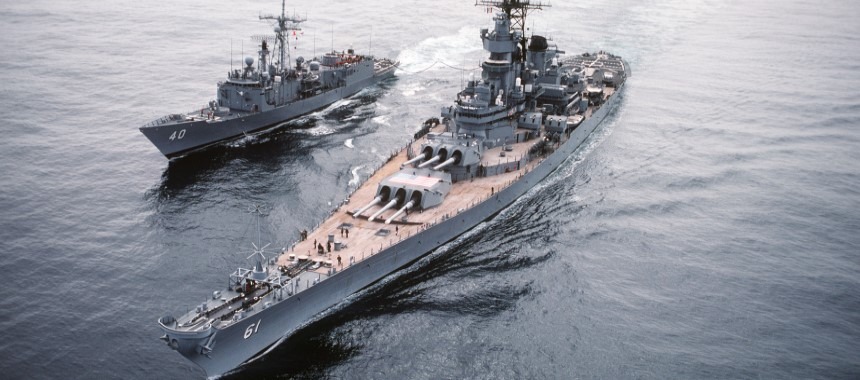
Battleships of the «Iowa» class are considered the most advanced ships in the history of shipbuilding. It was during their creation that designers and engineers managed to achieve the maximum combination of all the key combat characteristics: armament, speed, and defense.
Battleships of the «Iowa» class marked the pinnacle of battleship evolution. They can be considered the ideal design. Here are the names of the legendary battleships: «Iowa» (BB-61), «New Jersey» (BB-62), «Missouri» (BB-63), and «Wisconsin» (BB-64). Two more battleships, «Illinois» (BB-65) and «Kentucky» (BB-66), were not completed.
By September 1939, the Americans had a clear advantage over the Japanese in terms of the number of military ships built. It was decided to experiment and build a high-speed battleship. However, at the same time, U.S. intelligence suspected that Japan had begun the construction of a third and fourth battleship of the «Yamato» class. According to their information, the displacement of these warships was 46,000 tons, and the caliber of their artillery was 406 mm (in reality, the data were different: 62,315 tons and 460 mm, respectively). The impending strengthening of the fleet of a potential adversary raised concerns. Therefore, the General Council instructed the design department to consider a slow-speed version of the battleship in parallel with the development of the high-speed one.
In April, three preliminary designs for a slow-speed battleship were presented for Admiral Hart's consideration. Eventually, one of them was approved. Immediately after this, the production of working documentation — blueprints — began. The decision to build the first two battleships of the new type was approved by Congress on May 17, 1939. In Europe, the war was already underway. Right after France's capitulation, the American Congress adopted a shipbuilding program that envisioned the creation of a powerful fleet. It even had the name «Two Ocean Navy Act,» signifying a «Fleet of Two Oceans.»
Battleships were not at all a minor part of the program. Therefore, on September 9th of the same year, an order was placed for two more ships of the «Iowa» class, named «Illinois» and «Kentucky». The production of battleships of the «Iowa» class was quite a challenging task, but the American industry managed it quite easily. The keel laying of the lead ship took place on June 27, 1940, and by February 22, 1943, it had already been commissioned into the U.S. Navy. Unfortunately, the last pair of battleships was not as fortunate due to changing priorities in the military-industrial complex, and the construction of battleships was halted.
Take a look at a collection of historical photos and videos about the legendary battleship Iowa:
At the end of 1943, President Roosevelt embarked on the USS Iowa to travel to Casablanca, with the purpose of escorting a Pacific Fleet carrier task force. After the war, the USS Iowa was placed in reserve and was recommissioned on August 24, 1951, before being assigned to the U.S. Atlantic Fleet. In the spring of 1980, the U.S. Congress made the decision to reactivate the Iowa-class battleships (4 units).
By that time, the Cold War between the USSR and the «hypothetical adversary» had reached its peak. The United States had set a course for a rapid expansion of its fleet. This could be termed as a «second birth,» marking the revival of the famous battleships. They retained their heavy artillery sets, armor belts, and decks, in addition to being equipped with strategic weapons such as Tomahawk cruise missiles, anti-ship missiles, and automated anti-aircraft artillery systems.
 Salvo of the battleship Iowa (BB-61)
Salvo of the battleship Iowa (BB-61)
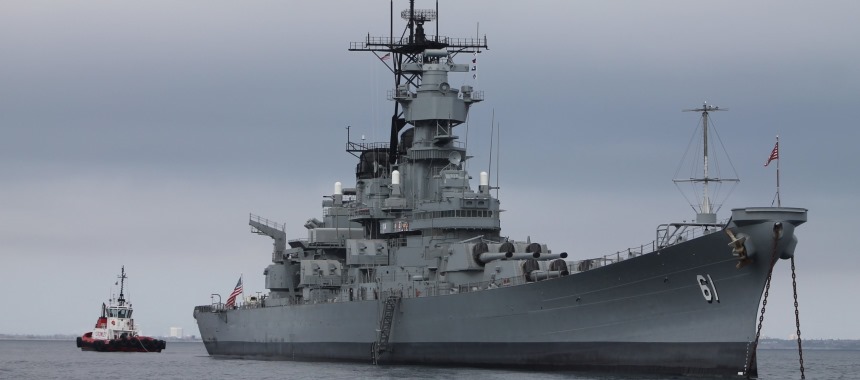 The battleship Iowa in reserve
The battleship Iowa in reserve
On April 28, 1984, after thorough modernization in New Orleans, the battleship «Iowa» returned to active service. However, in mid-April 1989, following an explosion in the powder magazine that caused significant damage to the ship's main gun, it was placed in reserve.
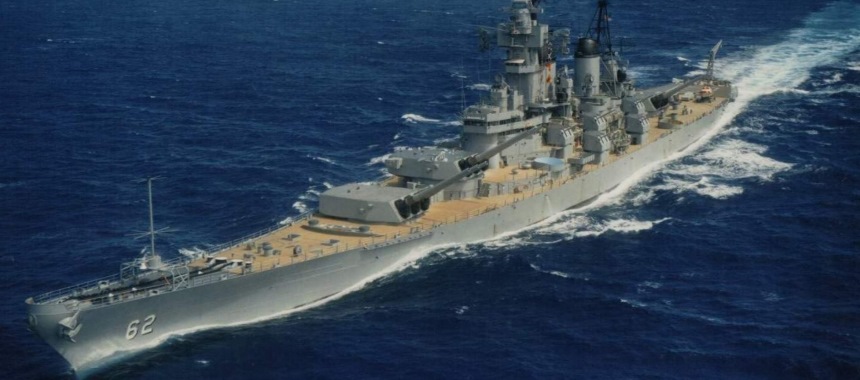 The battleship New Jersey at sea
The battleship New Jersey at sea
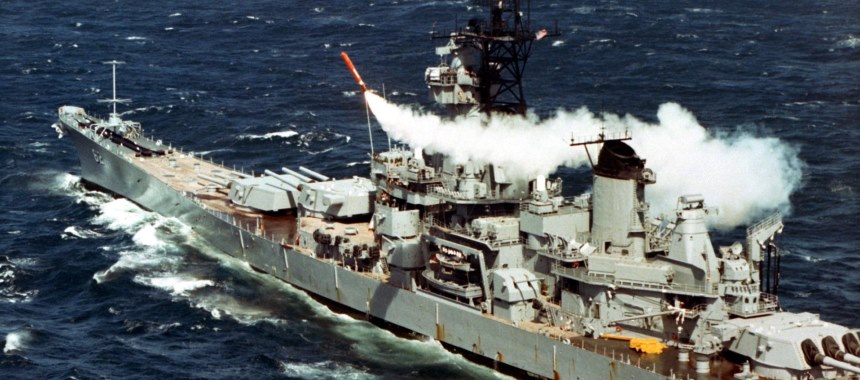 Launch of a Tomahawk missile from the battleship New Jersey
Launch of a Tomahawk missile from the battleship New Jersey
 The battleship New Jersey at permanent mooring
The battleship New Jersey at permanent mooring
The battleship «Wisconsin» was placed in permanent mooring at the Newport Port on January 12, 1995. Battleships of this type participated in the Vietnam War, took part in Operation Desert Storm, and were also involved in the Falkland Islands conflict. They underwent repairs, modernization, and were returned to active service.
 The battleship Wisconsin on a voyage
The battleship Wisconsin on a voyage
 The battleship Wisconsin at permanent mooring in Newport
The battleship Wisconsin at permanent mooring in Newport
On May 4, 1998, the battleship «Missouri» was transferred to the U.S. Navy Museum, located at Pearl Harbor naval base. Despite being 40 years old, the battleships have been remarkably well-preserved since they were in active service for only about 13 years, with the rest of the time spent in reserve.
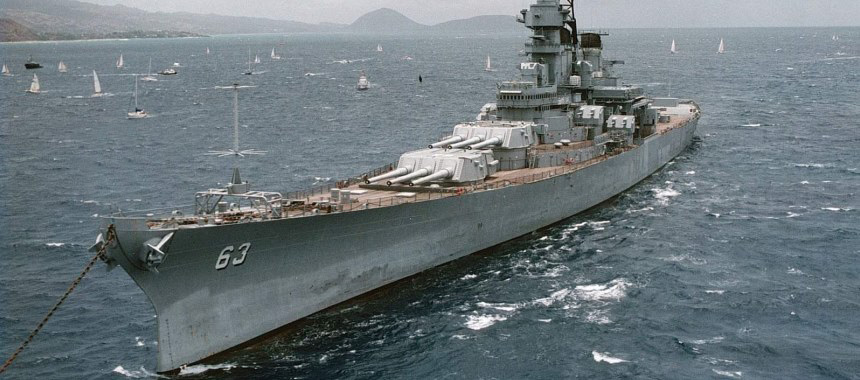 The battleship Missouri at anchor
The battleship Missouri at anchor
 Re-shifting the battleship Missouri
Re-shifting the battleship Missouri
Technical specifications of the battleship «Iowa»:
- Displacement — 50 000 tons
- Length — 300 m
- Beam — 33 m
- Draft — 10 m
- Speed — over 33 knots
- Range — 15 000 nautical miles
- Complement — 2 800
Armament:
- 9 * 16 in (406 mm)/50 cal Mark 7 guns
- 12 * 5 in (127 mm)/38 cal Mark 12 guns
- 32 * BGM-109 Tomahawk cruise missiles
- 16 * RGM-84 Harpoon Anti-Ship missiles
- 4 * 20 mm/76 cal Phalanx CIWS
- Comments
 en
en ru
ru uk
uk




